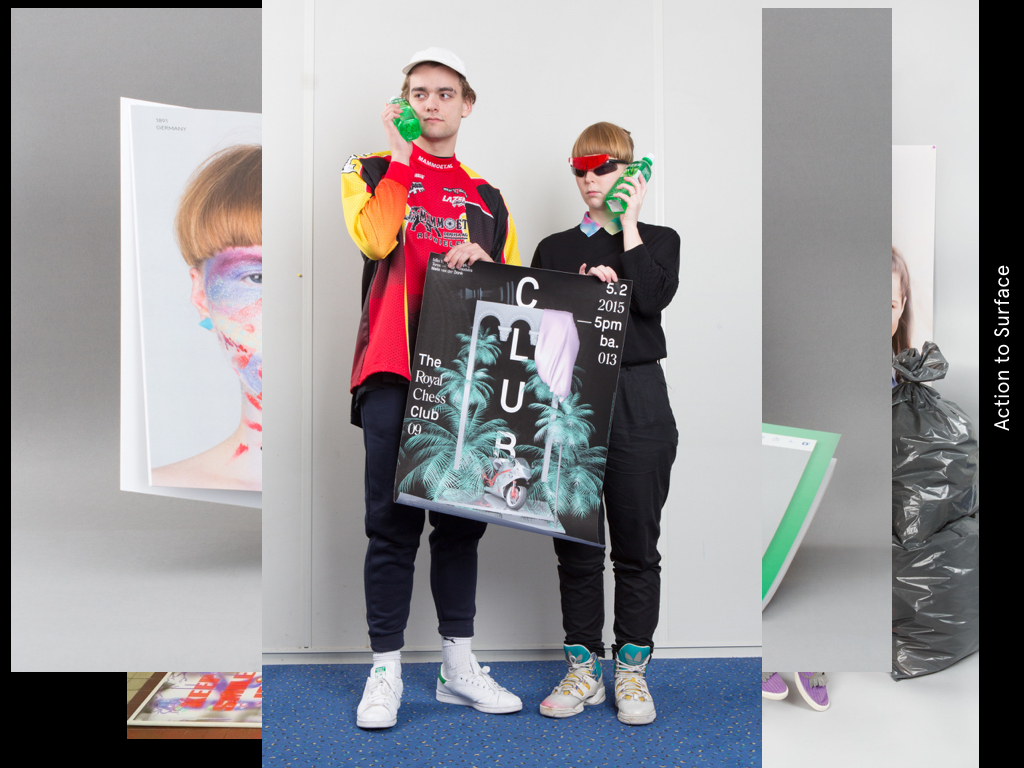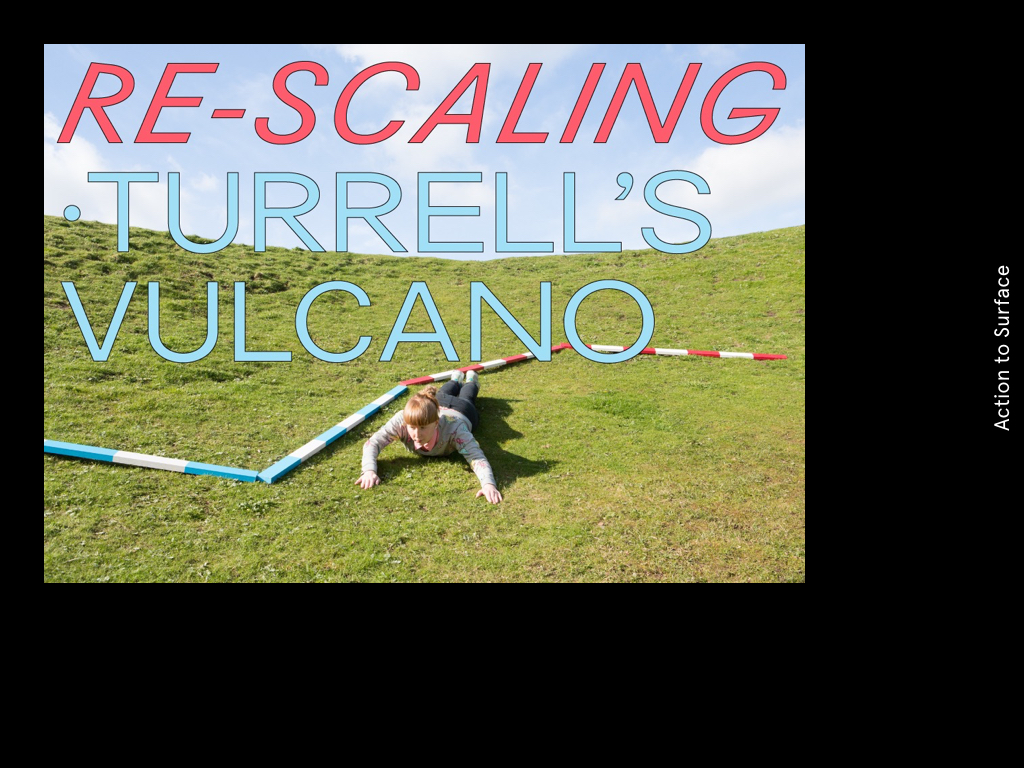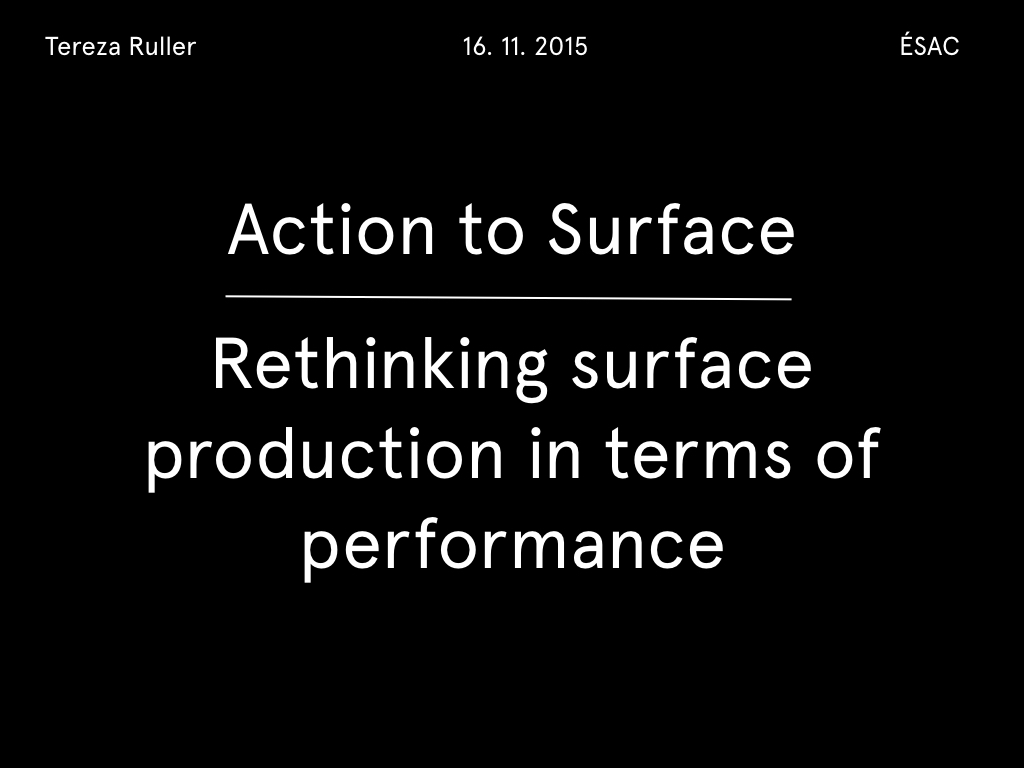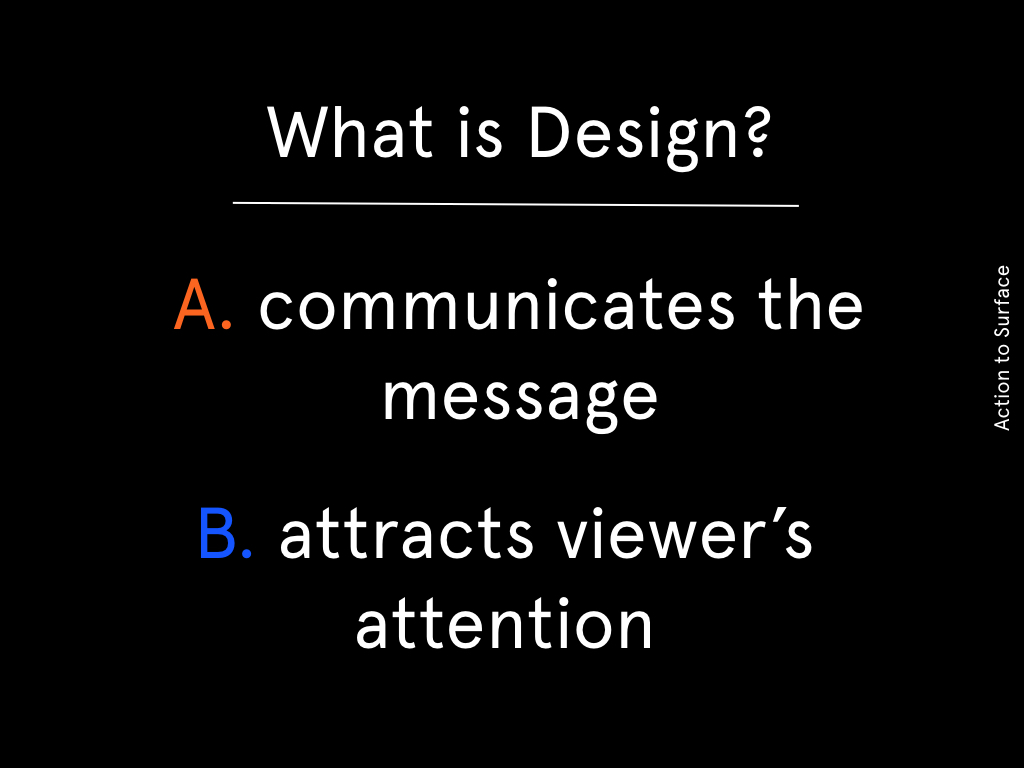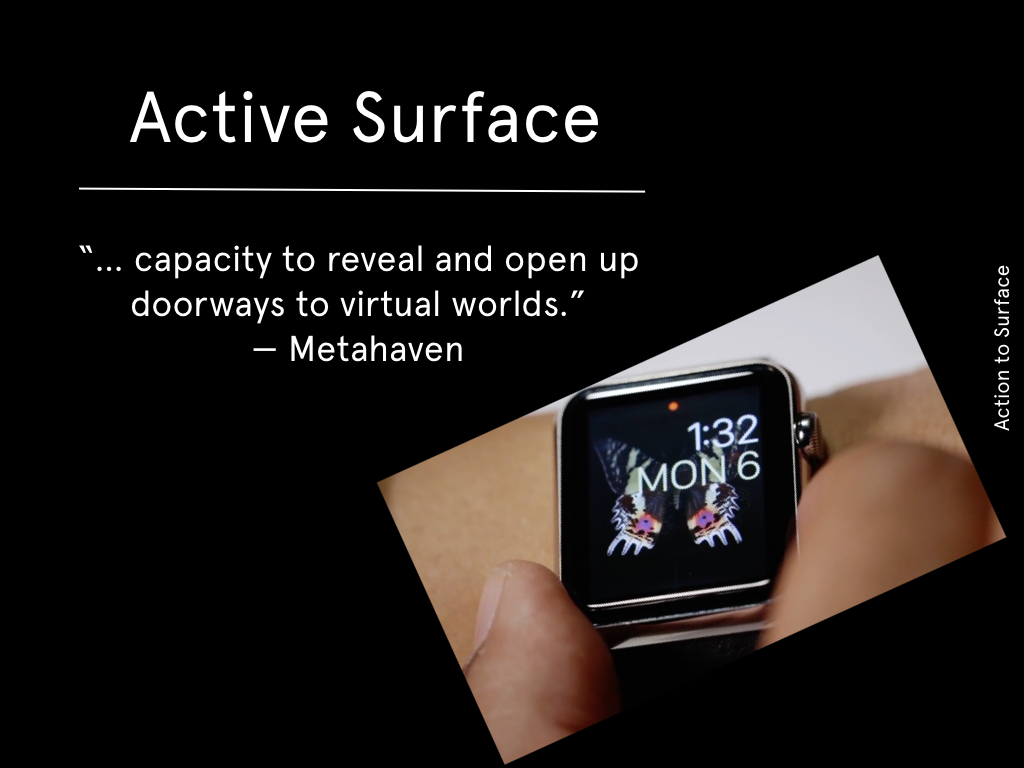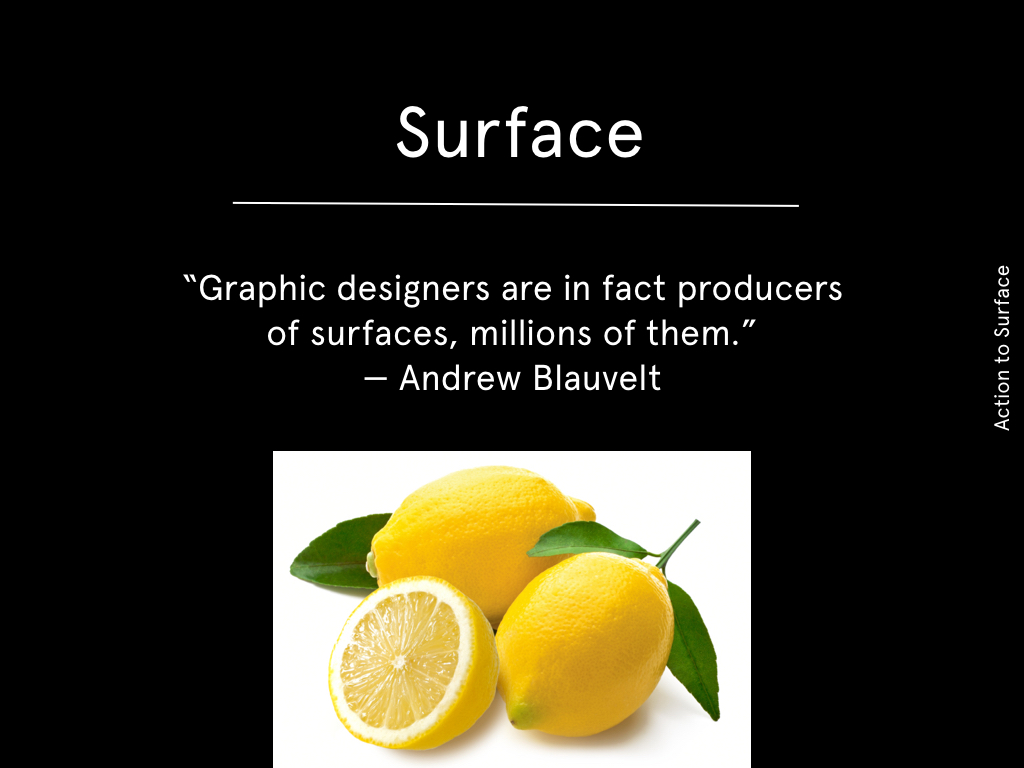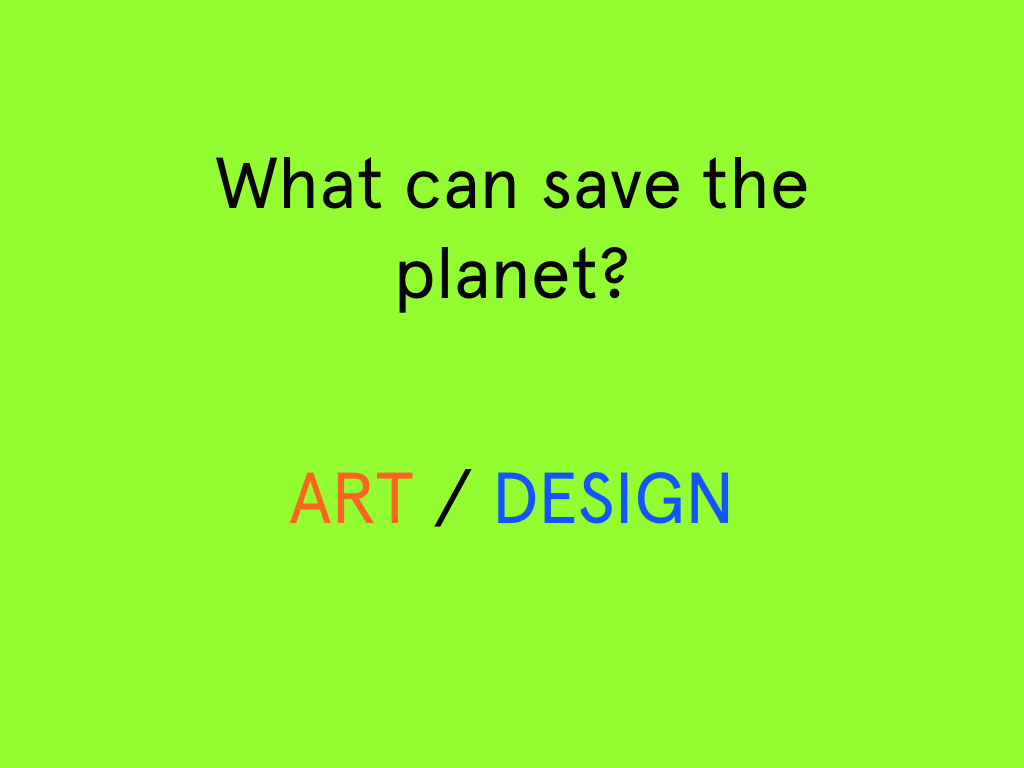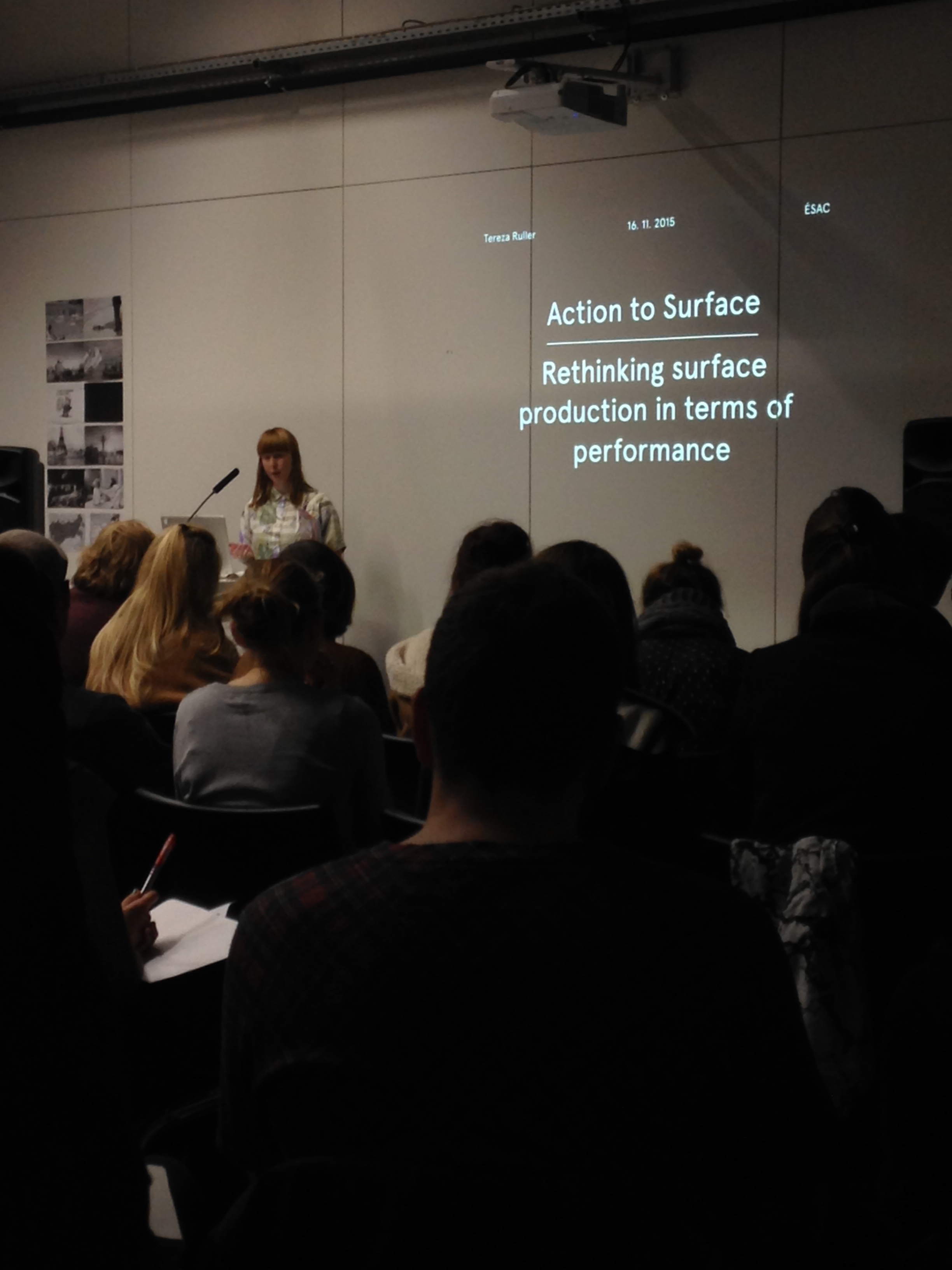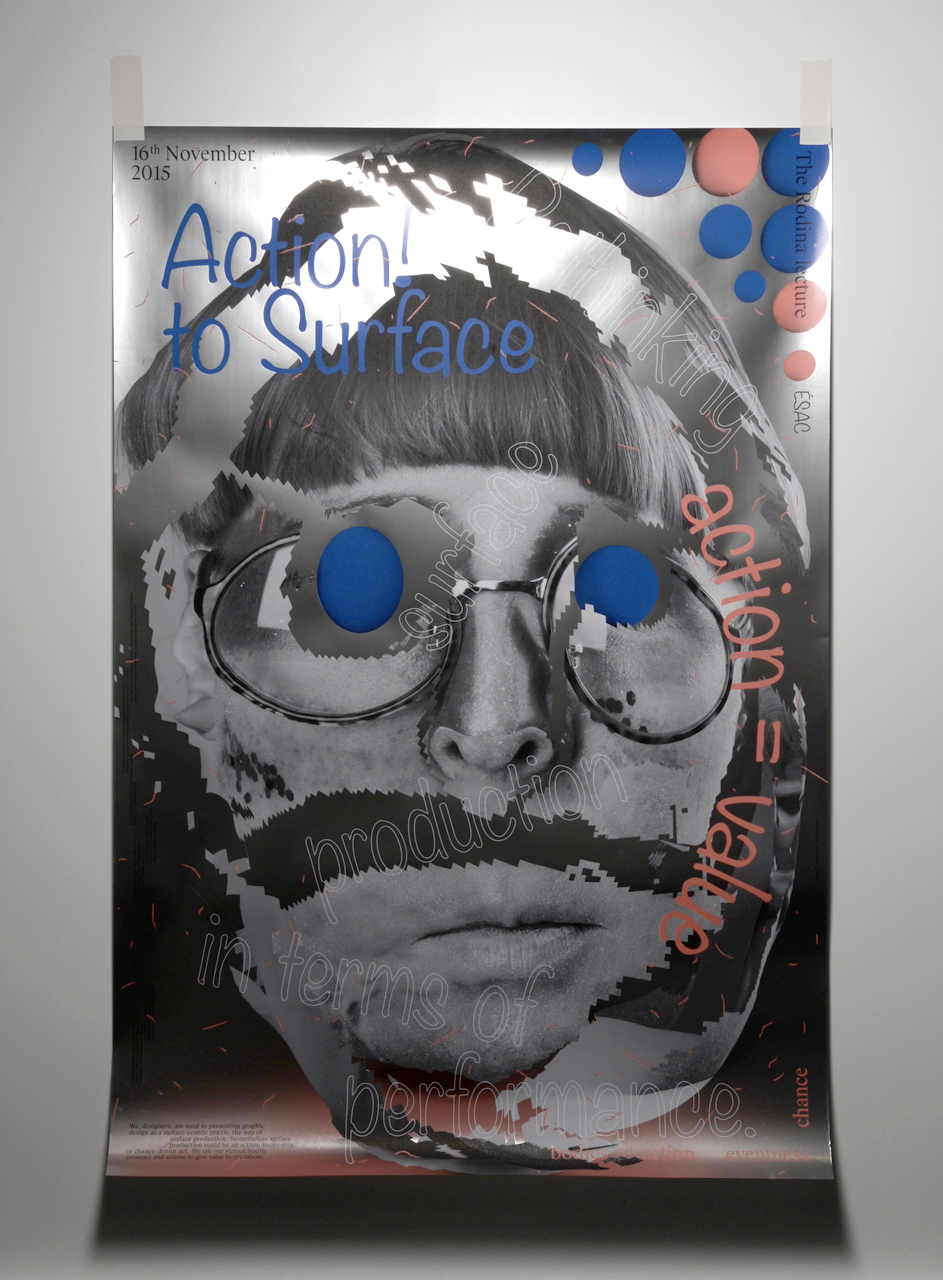
Action! to surface, Design : The Rodina, Production : Ecole supérieure d’art de Cambrai, Print : Lézard Graphique
En préambule à la conférence Action to Suface prononcée par Tereza Ruller — The Rodina — elle eut la gentillesse de répondre à quelques questions préparés par nos étudiants sous la direction de Claudia Leduc. A la fin de cet entretien, vous trouverez une série de slides présentés lors de la conférence du 16 novembre 2015, ainsi qu’une restitution/report de cette conférence par l’un de nos étudiants.
Could you tell us about yourself, your education and how you entered the world of work?
I have been educated in the Czech Republic, studying what we call “Intermedia arts”. This means working with many different media, same as for example Fluxus used to do (conceptual art, painting and video…). At that time I was curating a small gallery next to the Academy, because I found there were not many. I realized it’s much more fun to create invitations and posters for my friends’ exhibitions, rather than creating my own exhibitions.
Thus I discovered that I was more of a designer: I entered the world of design as an amateur and then I found a real interest in the rules of design. As an artist, you work a lot for yourself, but as a designer you work more for the others.
How do you balance creation and technique in your work?
In The Rodina, we believe in Internet, almost as a religion (note: Tereza coined the expression ‘God of the Internet’). In art, we use another word: circulation. Every artwork/design has potential to circulate thanks to the internet.
For example, you design a poster (and I mean the whole process of design): you do research, you find how to connect your idea to technique, then you visualize it through sketches, then you take photos, maybe you photoshop them, over and over again. Finally you print the poster. Now, it is not finished yet! When you put it on the net, for example on your Instagram or Tumblr, it circulates – and this is part of the process. In our case we call it ‘The Rodina’s backstage’: you can share your ideas, research, the ideas you didn’t use, it can just be a conceptual mess online, and it makes the process go on.
You were talking about the rules of design, can you tell us more about it?
Well, in the past, I used to think that design had rules and that nobody could do anything about it. Then, I discovered that these rules are fluid, that you can change them, work on them. Having your own studio is great because you can work out your own set of rules.
For example, every year, around Christmas, we have a meeting, with my husband & design fellow, where we decide what the new projects are, what we want to work on, how we want to work on it. My husband and I created practice called “The Rodina”, this means “family”.
You use lots of colors, what do colors mean to you?
I like colors. Using many bright colors is easier said than done, it makes design a challenge. For many, a nice design is using black and one or two other colors, but what I like, is to use many colors to make it more difficult. I like to connect things that are not meant to be connected.
Colors, shapes, media, performance, action, what about… words?
There are two situations: working for myself or working for a client.
If it’s for me, I generally look for visual inspiration, read news and books. I try not to fix on design, rather extend my research projects by philosophy, technology or art in general.
If it’s for a client, whether it is an institution, a cultural client, I look at the topic which becomes my main inspiration and I try to set up few key words. Of course I look for the meaning of things as well as for a typeface that fits conceptually and visually to the project.
Which difficulties have you encountered in your professional life?
The democratization of design (namely thanks to software available) is a great thing but it is also scary. Designers may feel in danger of becoming obsolete. We may think a coder might take over our job. It is really important for me to be able to express my fear.
In January, I have an exhibition about fear in our society called “Shadows in Paradise” (here our society means “Europe”), and it helped me a lot when dealing with that.
But we designers have a role to play here, I understood that after my studies. My teachers always wanted us, students, to think about what we could do, to make things better, not just complaining around that things are bad.
Graphic Design has the power to communicate, show things, to talk about problems, so we have to do it.
–
Tereza Ruller is Amsterdam based Czech born designer and artist. She investigates connections between performance art and surface centric media. She runs the research “Action to Surface”, while tests the results in her design practice The Rodina.
www.therodina.com
www.studiomoniker.com
Tereza Ruller est une jeune artiste designer d’origine Tchèque vivant à Amsterdam, membre du collectif The Rodina, Moniker et Design Displacement Group.
Malgré les évènements tragiques du week-end du 13 Novembre, nous accueillons ce lundi 16 novembre l’artiste Hollandaise Tereza Ruller, pour une conférence/lecture de son mémoire «Action! to Surface», un vrai rayon de soleil pour tous.
L’arrivée de l’artiste le matin à l’école s’est fait dans une ambiance plutôt lourde et chargée en émotion, elle participa également à la minute de silence du midi, pas facile.
La conférence fut ouverte par quelques mots du directeur, Jean-Michel Géridan qui généralement affable, préféra s’effacer derrière un extrait du discours d’Albi de Jean Jaurès, avant de laisser place à Tereza. Celle ci commence par nous dire quelques mots sur sa pensée vis à vis des évènements, à quel point elle est triste, et nous rappelle l’importance de la liberté.
Débute ensuite la présentation de « Action! to surface : Rethinking Surface Production in Terms of performance », une recherche établissant des liens entre l’action, le corps, le designer et les surfaces de la production, tout en tentant de convaincre le lecteur qu’une action ou un happening peut être surface de production. Une présentation très dynamique, visuelle et sonore, ponctuée de bons mots et de rires.
Selon Tereza, la production doit se faire sans restriction, tout peut être support de production, ou une surface de design (un fruit, le ciel, le monde), et le corps, un outil de production et de performance.
Corps + Audience + Action + Chance = Performance
Par ailleurs, le rôle du designer est de communiquer et transmettre un message visuel en attirant l’attention du spectateur, établir un dialogue avec lui, tout en délivrant le meilleur. La pratique du design graphique se fait en relation avec l’objet et la surface. Elle soutient la thèse suivante : l’art et le design sont des parties intégrantes du concept même de performance.
La performance, considérée donc comme un procédé de design comporte plusieurs ingrédients : le corps, l’audience, l’action et la chance. En découle une présentation de plusieurs désigner performeurs à travers les époques allant de Karel Teige à Stephan Sagmeister et son « happy show » en passant par Oscar Schlemmer (Bauhaus), Yves Klein, Joseph Beuys, Andy Warhol, ou plus récemment, le groupe Pinar & Viola.
Puis l’artiste nous montre l’influence de la technologie sur la performance depuis les années 80 et comment nous utilisons celle-ci, la manière dont elle influence notre vie quotidienne ainsi que notre production. Et nous amène au travail du collectif Moniker et leur Anti Selfie
La fin de la conférence approche, cependant Tereza demande à tout le monde de se lever afin de participer à un jeu de questions/réponses, puis de saisir les feuilles présentent sur les sièges sur lesquelles sont inscrites respectivement: « Art » et « Design ».
Le principe est simple, l’artiste pose une question et chacun doit y répondre en brandissant l’une des deux feuilles, parfois les deux.
Parmi les questions:
Qu’est-ce qui peut sauver la planète?
Qu’est-ce qui est le plus facile?
Qu’est-ce qui peut nous faire gagner le plus d’argent?
Lequel est le plus cool?
Tereza finit par souligner l’importance de la technologie et le langage codé, le code dans le design actuel et futur, un langage qui, pour elle, sera et devrait être parlé et compris de tous dans l’avenir.
Explorer 555

